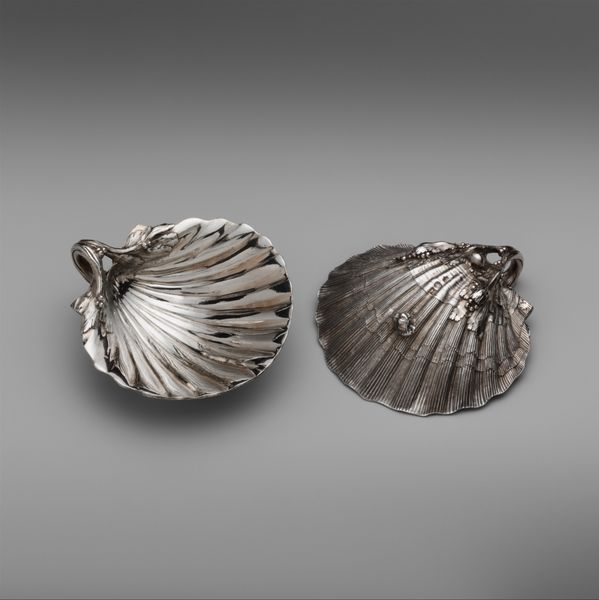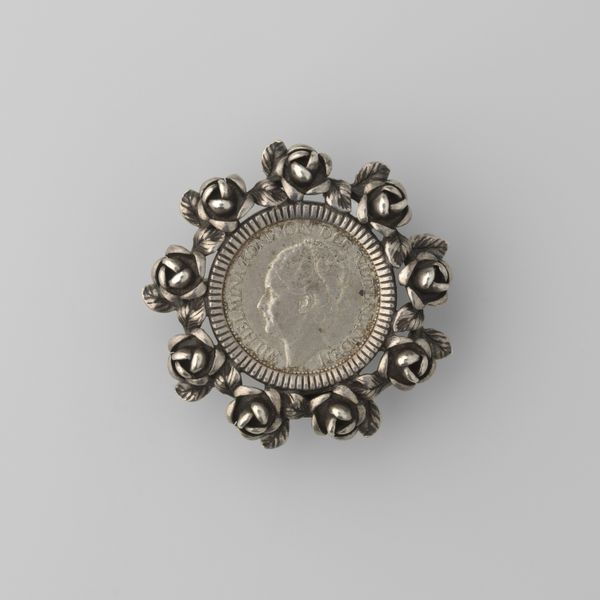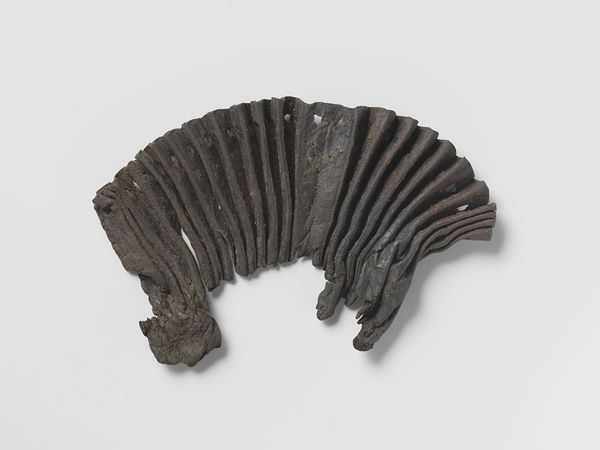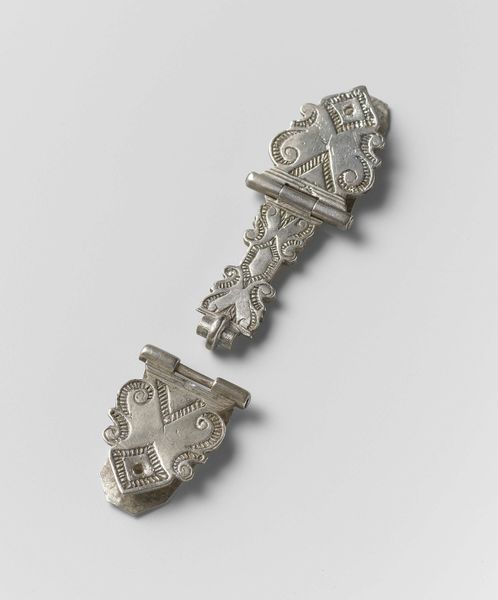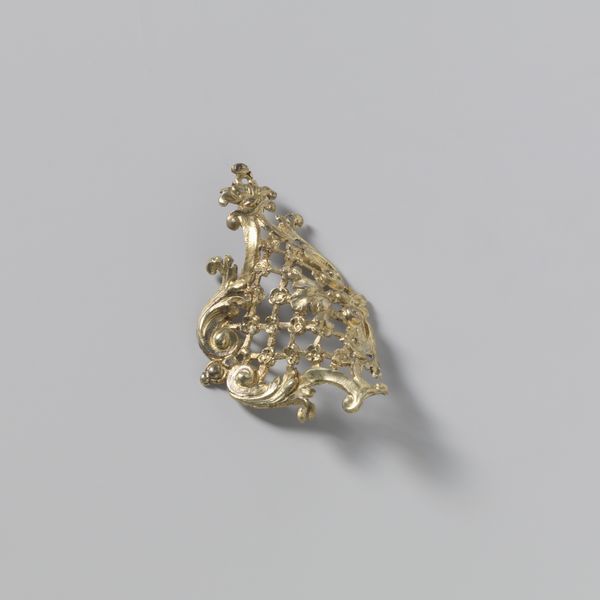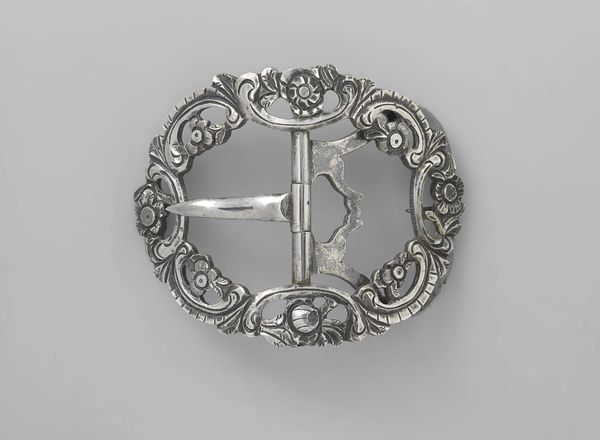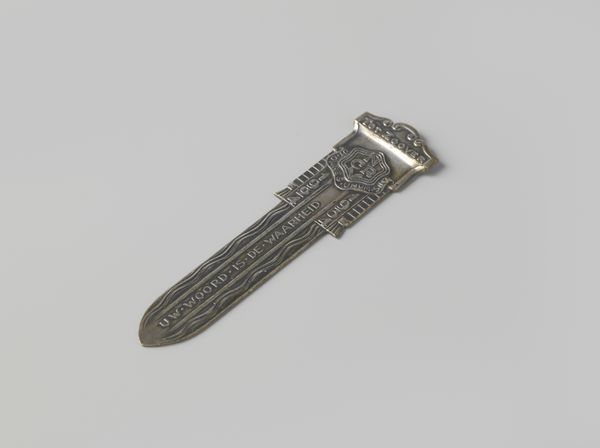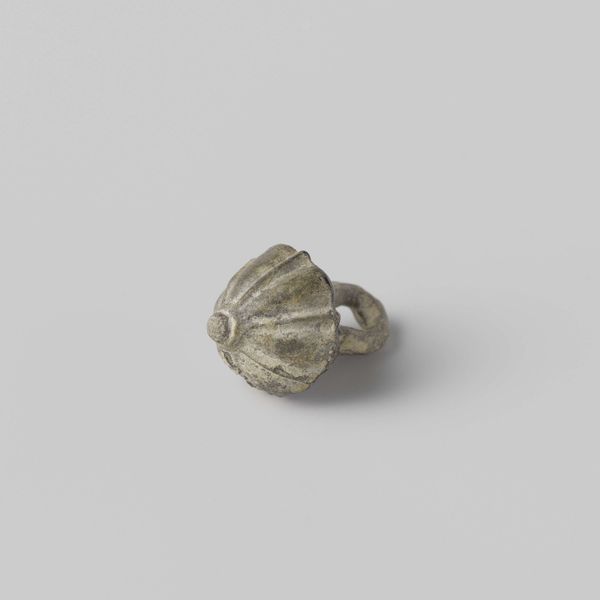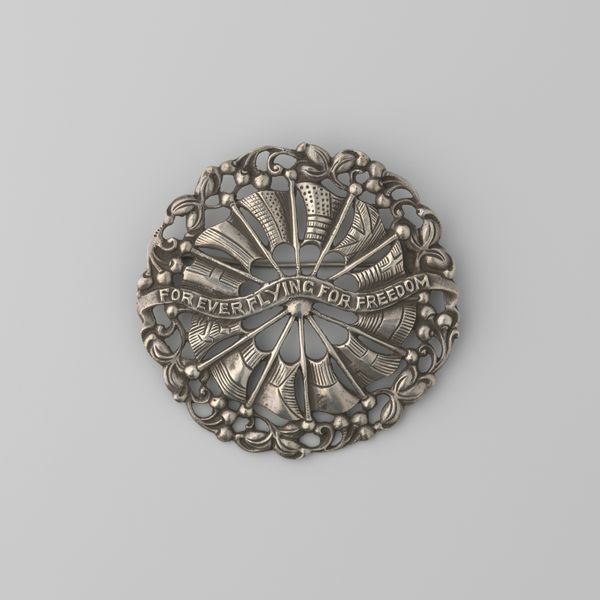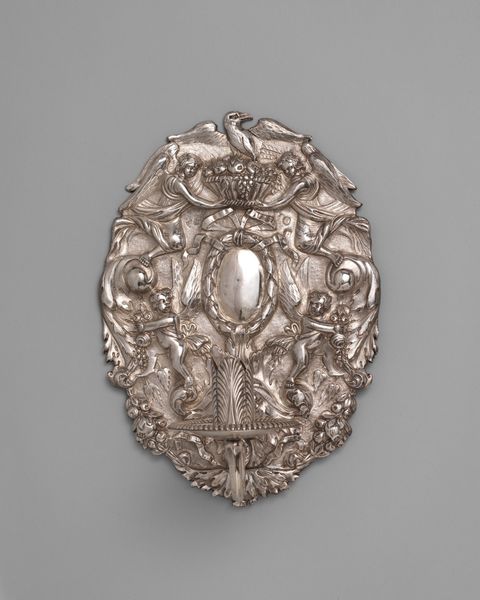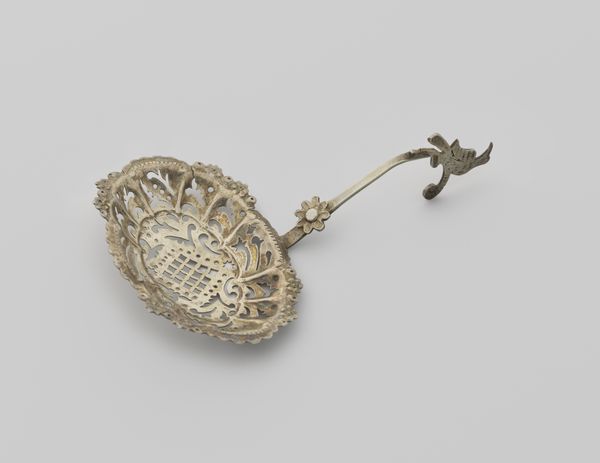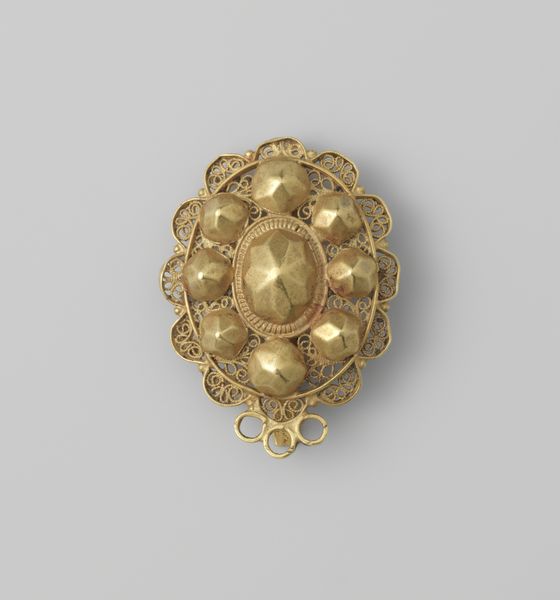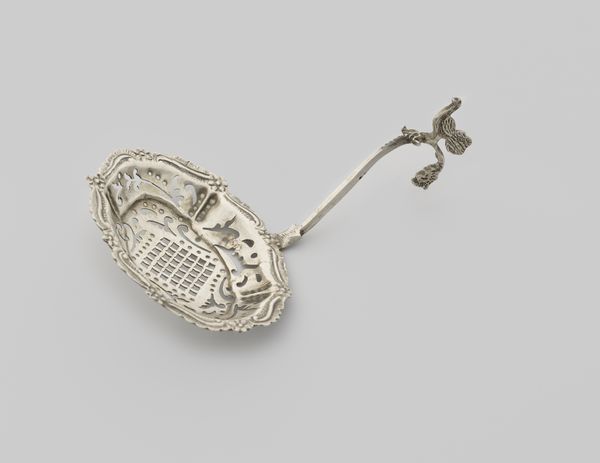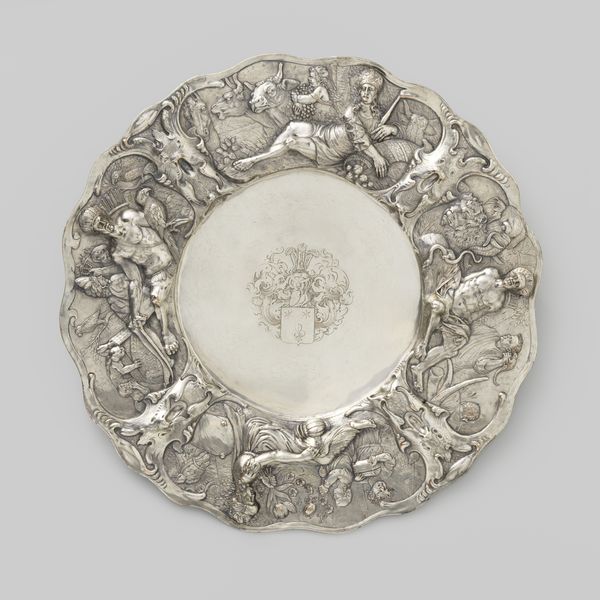
ornament, metal, sculpture
#
3d sculpting
#
3d model
#
ornament
#
3d printed part
#
rounded shape
#
metal
#
plastic material rendering
#
jewelry design
#
virtual 3d design
#
3d shape
#
geometric
#
sculpture
#
metallic object render
#
3d modeling
Dimensions: height 4 cm, width 2 cm, depth 0.9 cm
Copyright: Rijks Museum: Open Domain
Curator: Here we have "Helft van een doorgezaagde draadbroche", Half of a Sawed-Through Wire Brooch, from 1998. The medium is metal, in the form of a sculpture/ornament. What are your initial thoughts? Editor: Immediately, I’m drawn to its…unfinishedness. The exposed cut suggests a process, a disruption. It's almost aggressive. Is the artist intentionally revealing the construction? Curator: Precisely. In this context, we need to consider what such an act of disruption symbolizes. Is it a challenge to traditional notions of completion, wholeness, beauty within ornamental conventions? Perhaps a statement on the fragmentation of identity? Editor: Well, if we focus on the “brooch” aspect, what does it mean to deconstruct something typically meant for adornment? Is it critiquing the commodity fetish? By exposing its material form and the labor involved, is it rejecting the decorative for the sake of revealing the processes? Curator: I agree. Consider the time it was made, late 90s. A period where many forms of identity began transforming via the advent of digital technology. Could we perhaps see it as a metaphor for how these emerging technologies literally and figuratively cut through existing social and personal landscapes? Editor: The radial design too calls for examination. Its replication and severance is reminiscent of mass production, a standardized module violently taken apart. How much was dependent upon labor vs how much dependent on machinery and industrial processing. Curator: We can explore the geometric quality within jewelry design across cultural lines and classes. However, what about the labor of creating such fine details, then purposefully destroying them? Editor: It subverts the presumed preciousness of the ornament, making a statement on our consumer culture: things are assembled but easily disassembled. Nothing remains untouched in this cyclical structure. Curator: Ultimately, the brooch encourages us to rethink ornament not just as surface adornment, but as a site of meaning and conflict within identity, social structures, labor, and production. Editor: A sharp jab at the heart of ornamentation, laying bare the economic processes it conceals.
Comments
No comments
Be the first to comment and join the conversation on the ultimate creative platform.
